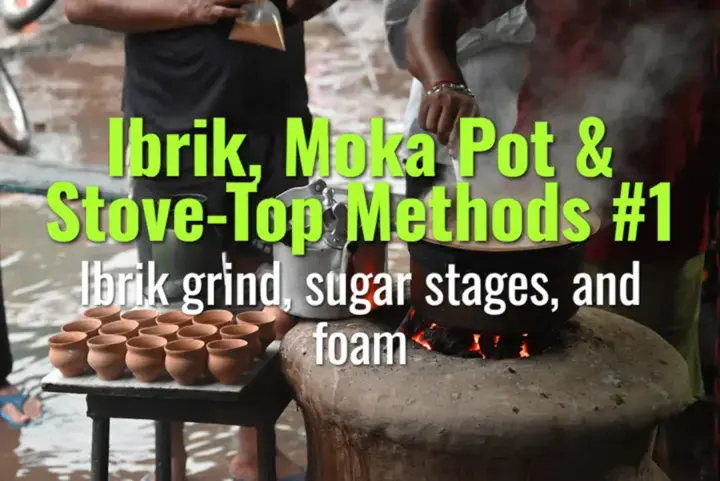Ibrik grind, sugar stages, and foam
The fundamentals of ibrik (Turkish/Greek coffee) preparation, focusing on grind size, sugar levels, and the signature foam (köpük/kaimaki).
- Coffee Basics Nerds
- 2 min read
Article 1 of 12 in Ibrik, Moka Pot & Stove-Top Methods/

Grind Size for Ibrik
- Requires the finest possible grind—finer than espresso, almost flour-like.
- Creates suspension in water rather than filtration.
- Too coarse → weak, under-extracted cup.
- Too fine (powdery dust) → risk of over-bitterness and excessive sediment.
Sugar Stages
Traditionally, sugar is added before brewing and dissolved during heating. Common categories:
- Sade (no sugar): Intense and strong.
- Az şekerli (little sugar): ½ tsp per serving.
- Orta (medium): ~1 tsp per serving.
- Şekerli (sweet): 1½–2 tsp per serving.
- Sugar level is declared when ordering—you cannot add later without disrupting the foam and suspension.
Foam Formation
- Foam (köpük in Turkish, kaimaki in Greek) is a hallmark of well-prepared ibrik coffee.
- Generated during gentle heating just before boiling.
- The goal: bring coffee to a slow rise, not a rolling boil.
- Foam carries aromatics and signals careful brewing.
Technique for Stable Foam
- Heat over low flame to control foam development.
- Remove from heat as foam rises, then return once or twice depending on tradition.
- Serve immediately, pouring foam evenly into cups before the liquid.
Cultural Significance
- Foam is a symbol of skill and hospitality.
- A well-foamed cup is seen as respect for the guest.
Summary
Ibrik coffee depends on ultra-fine grind, pre-brew sugar adjustment, and careful foam creation. Mastery of these details yields a rich, aromatic cup with the traditional foamy crown that defines Turkish/Greek coffee culture.